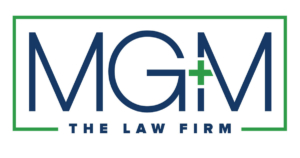COVID-19 vaccine & masking regulation in light of the SCOTUS stay of OSHA mandate
From MG+M The Law Firm. On January 13, 2022, the U.S. Supreme Court stayed the Biden Administration’s vaccine and masking emergency rule for large employers.[1] The “Vaccine Mandate,” a rule enacted by the Biden Administration’s Occupational Safety and Health Administration (“OSHA”), applied to all employers with 100 or more workers. The Vaccine Mandate required employers…

From MG+M The Law Firm.
On January 13, 2022, the U.S. Supreme Court stayed the Biden Administration’s vaccine and masking emergency rule for large employers.[1] The “Vaccine Mandate,” a rule enacted by the Biden Administration’s Occupational Safety and Health Administration (“OSHA”), applied to all employers with 100 or more workers. The Vaccine Mandate required employers to mandate that employees either receive a COVID-19 vaccination or wear a mask at work and undergo weekly COVID-19 testing.[2] The Court based its 6 to 3 decision on separation of powers principles: OSHA, in promulgating a rule that affected 84 million Americans, exceeded its authority to regulate occupational safety related to the workplace.[3] One of the majority opinion’s most memorable (and lyrical) lines summed up the Court’s view that the Vaccine Mandate was improperly overbroad: “[M]ost lifeguards and linemen [unconstitutionally] face the same regulations as do medics and meatpackers.”[4]
The Court reasoned that OSHA’s generalized vaccine mandate fell outside the scope of authority delegated by Congress to the government agency.[5] As a principle of administrative law and the separation of powers, an executive agency may not undertake a regulatory action unless it has express or implied authorization by Congress to do so.[6] Moreover, “‘[w]e expect Congress to speak clearly [grant express authorization]’ if it wishes to assign to an executive agency decisions of ‘vast economic and political significance.’”[7] The critical distinction, relying on the statutory language of the OSHA Act, was whether COVID-19 was an “occupational hazard,” and, thus, within OSHA’s regulatory purview as it is delegated by Congress. The Court said “no.” The majority held that the virus is a “universal risk,” no more particular to the workplace than to “schools… sporting events, and everywhere else that people gather.”[8] “Permitting OSHA to regulate the hazards of daily life—simply because most Americans have jobs and face those same risks while on the clock—would significantly expand OSHA’s regulatory authority without clear congressional authorization.”[9]
The Supreme Court’s decision took immediate effect and removed the federal vaccine and masking mandate for large employers.[10] And, as a result of the decision, the patchwork of state and local laws and guidelines related to vaccines remain in place.[11]
Major American employers have responded in varying fashions to the January 13, 2022 stay of the OSHA mandate.[12] Citigroup, Inc., for instance, will leave in place its self-imposed mandate, whereby all employees must receive a vaccination by January 31, 2022, or face termination.[13] On the other hand, General Electric Co. suspended its remaining COVID-19 vaccine requirements.[14]
Federal vaccine requirements do not go away with the Supreme Court’s ruling. While the Court’s decision makes clear that general mandates such as the OSHA rule violate constitutional separation of powers principles, the majority stated: “Where the virus poses a special danger because of the particular features of an employee’s job or workplace, targeted regulations are plainly permissible.”[15] In other words, an OSHA vaccine rule may be constitutional if it is targeted and/or based on an occupational risk related to COVID-19 that is particular to a specific sector or industry.
As it stands, it is unclear whether OSHA or another federal agency will attempt to craft a vaccine and/or masking regulation for the trucking industry. In light of the continued fight in federal and state courts around vaccine and masking mandates, any such rule would likely be challenged.
[1] Nat’l Fed’m of Indep. Bus. V. Dep’t of Lab., Occupational Safety & Health Admin., 595 U.S. ___ (2022).
[2] Id. at 1.
[3] See id. at 9 (“Although Congress has indisputably given OSHA the power to regulate occupational dangers, it has not given that agency the power to regulate public health more broadly.”).
[4] Id. at 3-4.
[5] Id.
[6] Id. at 2 (Gorsuch, J. concurring).
[7] Id.
[8] Id. at 6-7.
[9] Id.
[10] Id.
[11] See e.g., New York, New York, “Order of the Commissioner of Health and Mental Hygiene to Require COVID-19 Vaccination in the Workplace” (Dec. 13, 2021).
[12] Chip Cutter, With Biden Mandate Blocked, Many Companies Won’t Impose Covid-19 Vaccine Rules, Wall Street Journal (Jan. 13, 2022), https://www.wsj.com/articles/vaccine-ruling-settles-divisive-issue-for-u-s-companies-11642111617.
[13] Thomas Gryta & David Benoit, Citigroup Sticks With Its Covid-19 Vaccine Mandate, While GE Drops Its Rules, Wall Street Journal (Jan. 15, 2022), https://www.wsj.com/articles/citigroup-sticks-with-its-covid-19-vaccine-mandate-while-ge-drops-its-rules-11642258637?mod=saved_content.
[14] Id.
[15] Nat’l Fed’n of Indep. Bus., 595 U.S. ___, at 7.
